Lone Hansen caught up with Diana Cronin, a potter from Chimacum. Hansen first encountered Cronin’s work at the Cecil Ross Studio and is a proud owner of three of her pieces.
Here are excerpts from Lone Hansen’s extensive conversation with potter, Diana Cronin. Some wording and order has been revised to provide further clarity.
Lone Hansen: How are you surviving this pandemic?
Diana Cronin: Sales have been very good for me during this pandemic. Before the pandemic I was taking a class with someone in Port Townsend to work on my website, so I was already gearing up to start selling my work online. People have been really [supportive]. I’ve got special orders for different pots; I’ve done two full sets of dishes; I was making these bird baths. I’ve shipped them to California, to Connecticut, to Florida, and others around locally. I just think people have wanted more joyful things in their life. So, the color, the happiness was something they wanted to have – because of these ‘dark times.’
Hansen: Your work is very joyful, I love it. Are you relying on sales to make a living?
Cronin: Yes, I am.
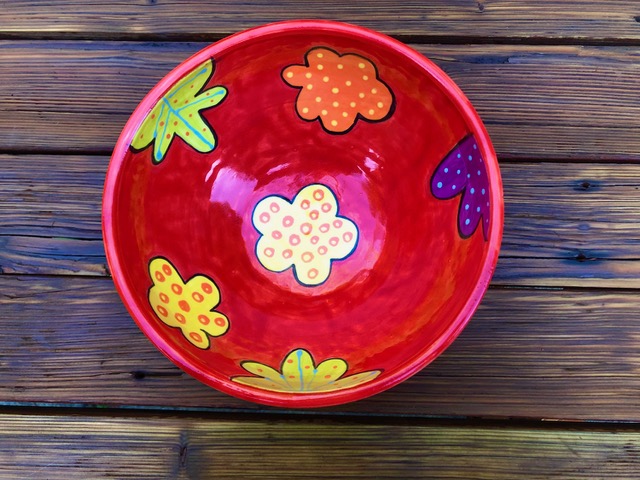
Hansen: You’ve done OK?
Cronin: Yes, I’ve done OK. Sometimes I’ve dabbled in other things. I used to lead bicycle tours around the country. I’d also buy bikes at a lower price, fix them up, and then sell them.
For a short while I went on unemployment (for self-employed gig workers). We were all in shock and we didn’t know what we were going to do. Shows were canceling and galleries weren’t open. Later on in the year, I went off unemployment because I started to make too much money. But it helped a lot. It was good to have that [support].
Hansen: Where do you show?
Cronin: I used to show at Bainbridge Arts Crafts but right now I’m not showing anywhere. I was kind of winding out of that. All the time that I’ve been working on pottery I’ve been building a very large mailing list that I can tap into. About 10% of the people buy from that mailing list, so it’s good for me.
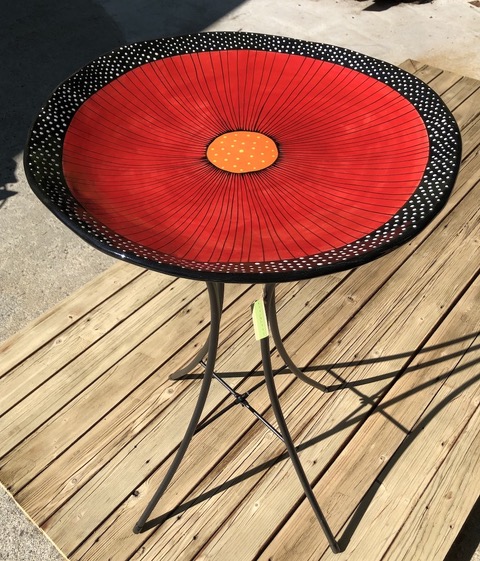
Hansen: Are you using social media to sell?
Cronin: I have also been trying to do more social media. I listen to a lot of podcasts and [I heard] this woman that’s an artist-marketing person and she said: “Let’s all try to post one Instagram post a day for 30 days and see how it affects our businesses.” So, I thought, “That might be a good thing to try” because more and more people are shopping online.
Hansen: What shows did you miss?
Cronin: I usually do the Bellevue Art Fair. It’s a lot of work – the hours are long and I do it by myself. I also do the Best of the Northwest – it went online but I didn’t do it. Bainbridge Island Studio Tour was also online and I didn’t do that either.
Hansen: Where did you grow up?
Cronin: I grew up in Miami Florida. I went to the Florida Institute of Technology and I studied Oceanographic Technology. [Although I chose that] my family was crafty and I took classes at the Lowe Art Museum in the summer. I was thinking about being in the arts but my Dad was very practical and said, “You’re good at science too,” and I was. I liked marine biology and was always snorkeling and had my own aquarium. When I got out of college, I began doing some bicycle touring. I rode my bike from Miami to Montreal by myself. After that I was very enthusiastic about biking. So, I’ve had all kinds of jobs before I became an artist.
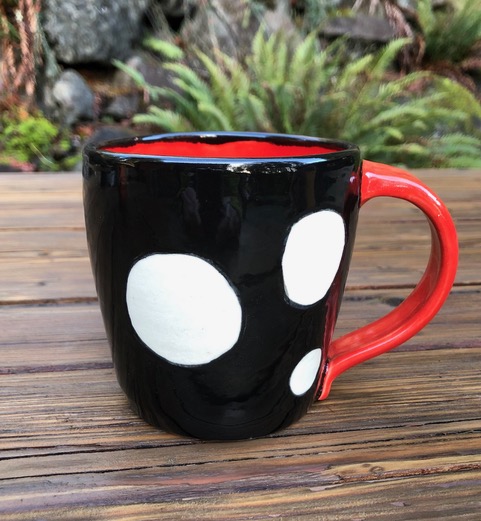
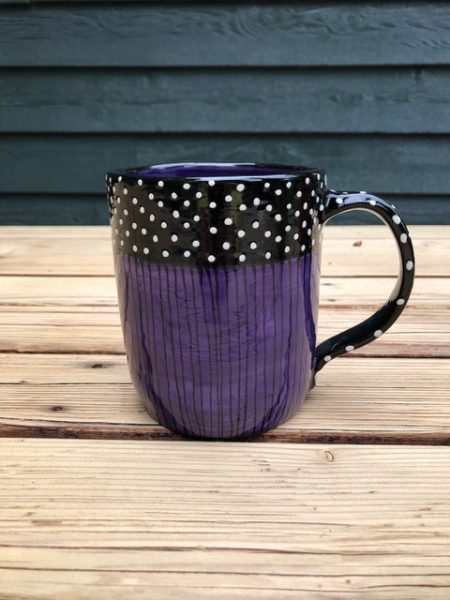

Hansen: When did you finally tell yourself you’re an artist?
Cronin: Maybe about 21 years ago. I got interested in pottery. I saw a little kiln for sale on Bainbridge Island and I bought it. I then took classes at Eagledale Pottery Studio for at least two or three years with Gail Hustedde. She was a good teacher. After that I started making pottery in my house and eventually expanded to my garage.
There was an operation in Seattle called The Undiscovered Potter Show. It would be like 80 potters – we’d all show up and put up our work for sale. You had to work a 4-hour shift and they would collect the money at a central checkout. That’s how I got started. After the first sale I came back and the woman who ran it said: “You’ve gotta make more stuff! You’re selling out!” And I was like, “Oh my gosh, I can’t believe it!” I was just really surprised because you sit in your studio and you don’t really get feedback.
Hansen: How long have you lived here?
Cronin: I’ve lived here for 23 years. I’ve been doing pottery the entire time. I started in the living room. Outside the house I have a big kiln.
Hansen: How did you arrive at these bright colors?
Cronin: It’s definitely the Florida pallet. Miami has a lot of art deco and art deco buildings. It has a lot of Latin influence. I think some of that comes through in my colors. Also, I spent a lot of time as kid snorkeling and seeing all this tropical fish. I also have an aquarium. A lot of those are brightly colored underwater scenes. Sunshine.
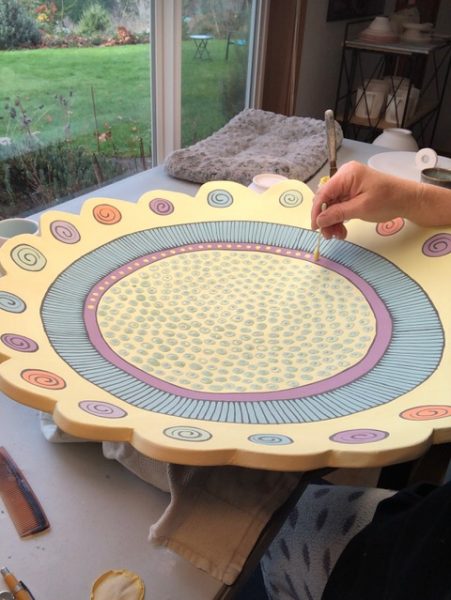
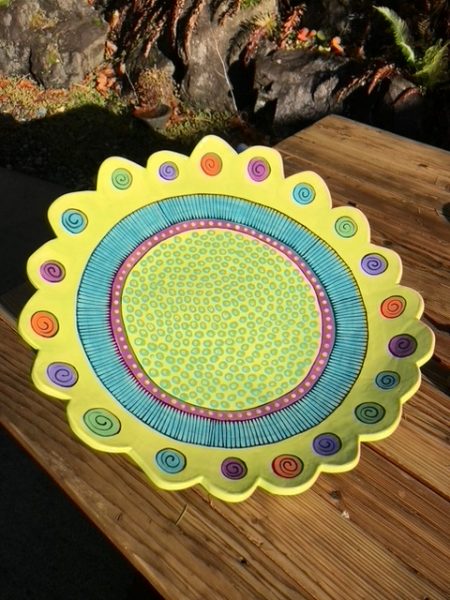
Hansen: How do you create your work?
Cronin: I use both underglaze and glaze. I like to position the glaze next to the underglaze so the design doesn’t move around a lot during the firing. I do three coats of underglaze and three coats of glaze and I brush it all on. Then I go back and decorate on top (the black lines) using a squirt bottle. The underglaze gets another three coats of clear so that’s six coats of glaze.
Hansen: That’s a lot.
Cronin: Some have more. It’s very time consuming – it’s the slowest part of my process but the biggest part of my product. People love the color – doing those multiple layers really makes the color pop. And I try and put complementary colors next to each other. That makes it more vibrant or electric. It adds more movement to it when your eye hits it – to see those two colors juxtaposed next to each other. It gives it energy.
Hansen: When you look back what do you see?
Cronin: It’s been a really great life. Being an artist is one of the most satisfying careers. It’s very difficult, especially pottery. But it’s really satisfying to go out into my studio and work on whatever I want to work on. And set my hours. It’s hard work but it’s very fulfilling.
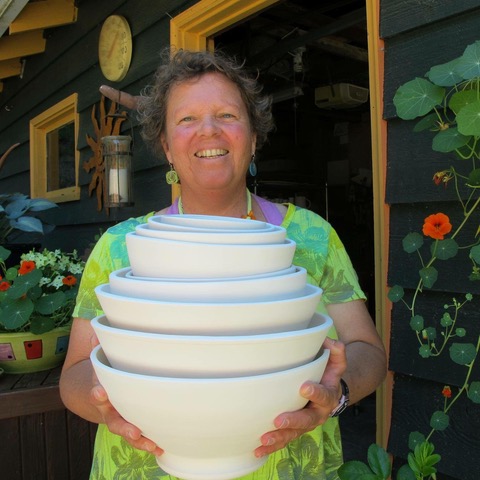
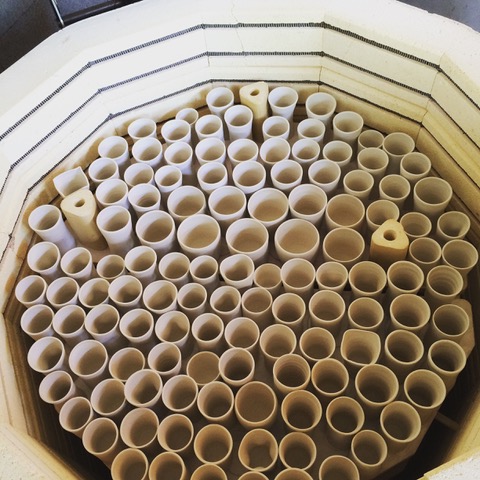
Hansen: What’s in the future?
Cronin: More internet sales; less shows; and people making individual appointments to shop at my studio. I needed a little break after Christmas break so I’ve been learning to sew — I made a wax cotton bag. I want do some tie-dying. I’ve taken some online pottery classes. It’s been really good to “up my game” a little more and focus on certain areas.
In the summer I might consider teaching some classes outside my studio – around 5 people. That’s appealing to me. The people that would come to my class would be people who need the supplies, etc. People that want to be creative. Port Townsend has a lot of retired people and a lot of them want to have an experience. They don’t want to buy more stuff. They have everything they need.
Hansen: How do we contact you?
Cronin: eggandipottery.com
OTHER ARTICLES BY LONE:
How Artists are Surviving this Pandemic: Victoria Foster Harrison
How Artists are Surviving this Pandemic: Sue Skelly
How Artists are Surviving this Pandemic: Judy Sorrels
How Artists are Surviving this Pandemic: Steve Parmelee
How Artists are Surviving this Pandemic: Diane Haddon
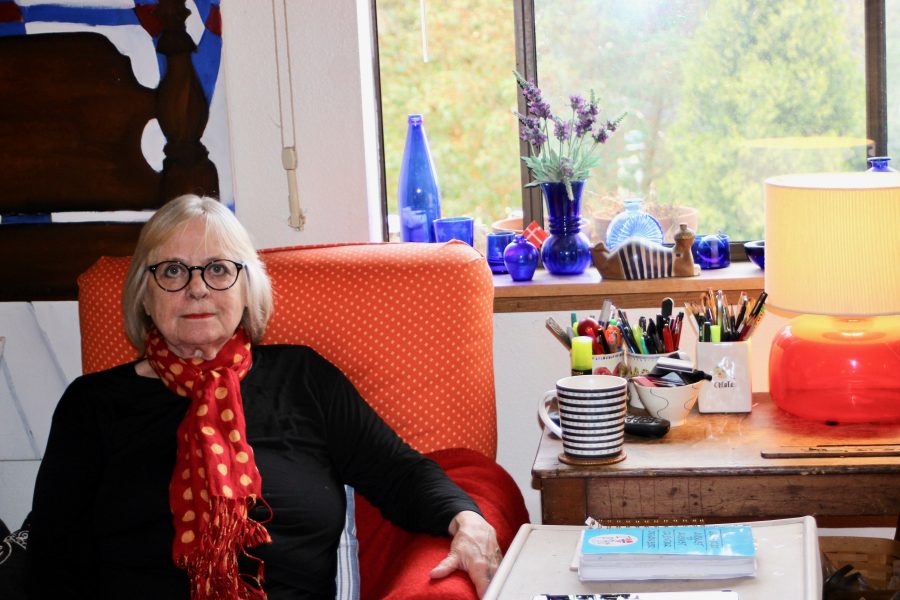
ABOUT LONE HANSEN. Lone is an artist who has owned several galleries in San Francisco, Seattle, and Bainbridge Island. She currently lives in Poulsbo where she is a member of the Poulsbo Arts League. During this pandemic and through her interactions with fellow artists, Lone has been creating art, gaining daily inspiration, cooking, and is taking care of dogs again. “I like this new normal,” she said. “It’s good for me – it is.” Lone has been “downsizing” her entire life – not just her studio, but her “whole life.” “It’s good to remember a life well lived,” she reflected. “Never boring, and it’s got me to where I am today.”